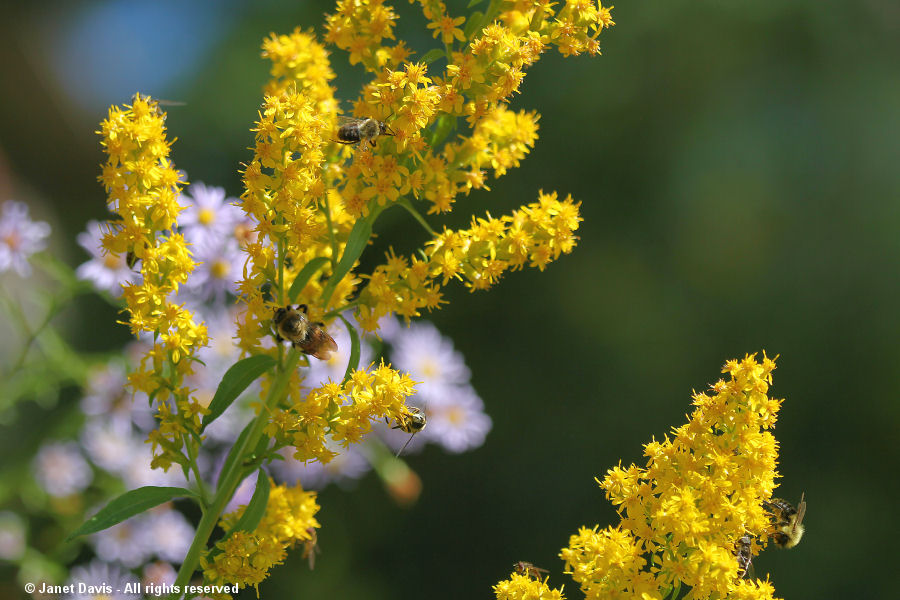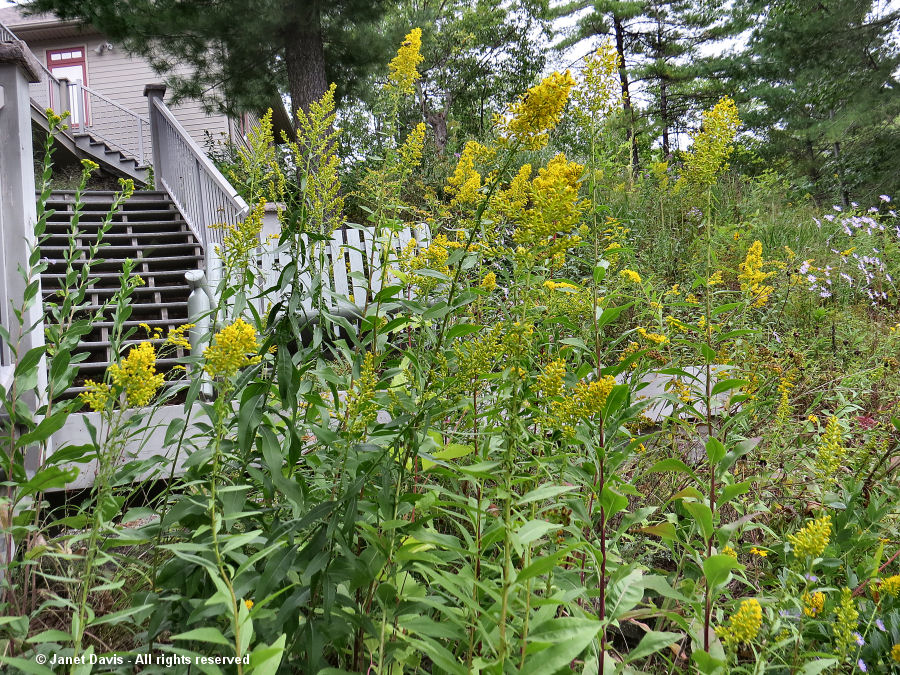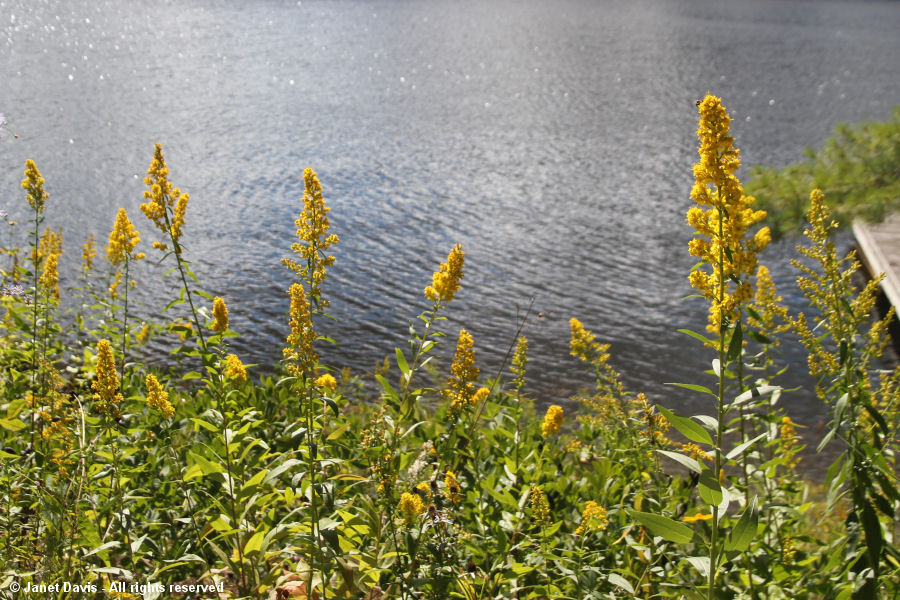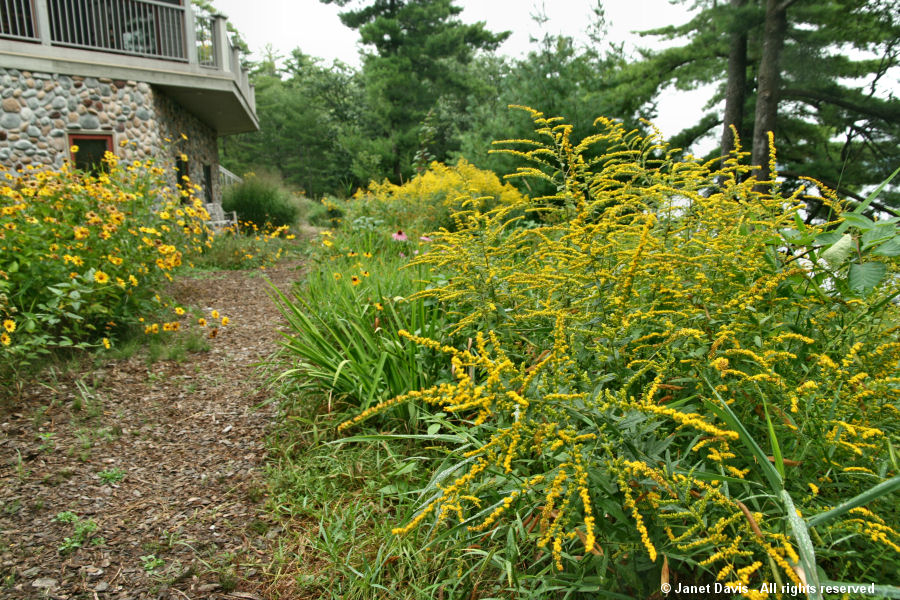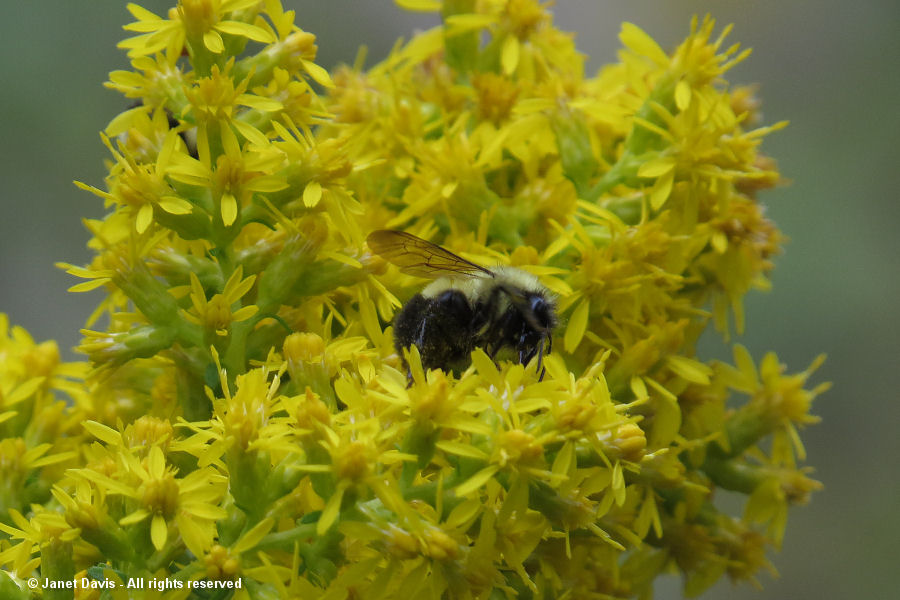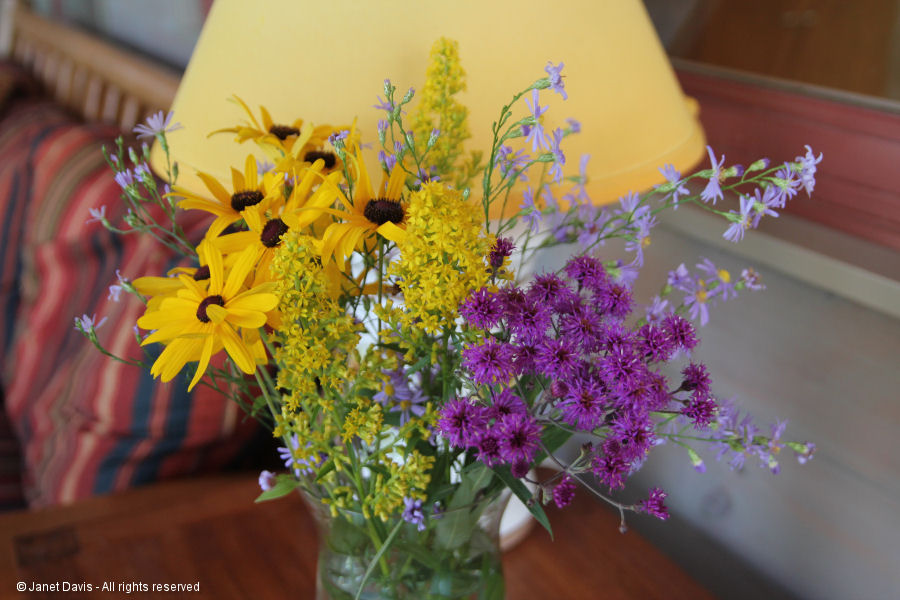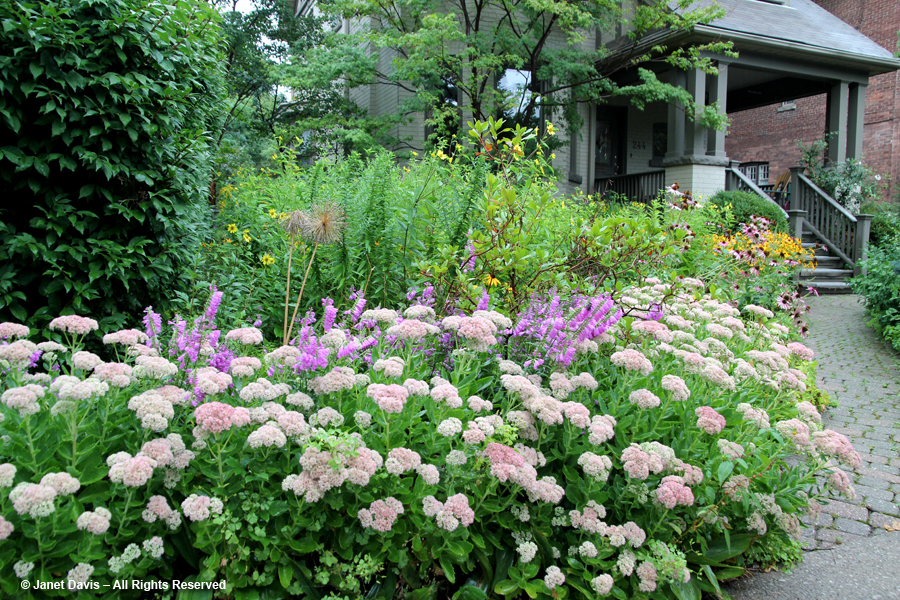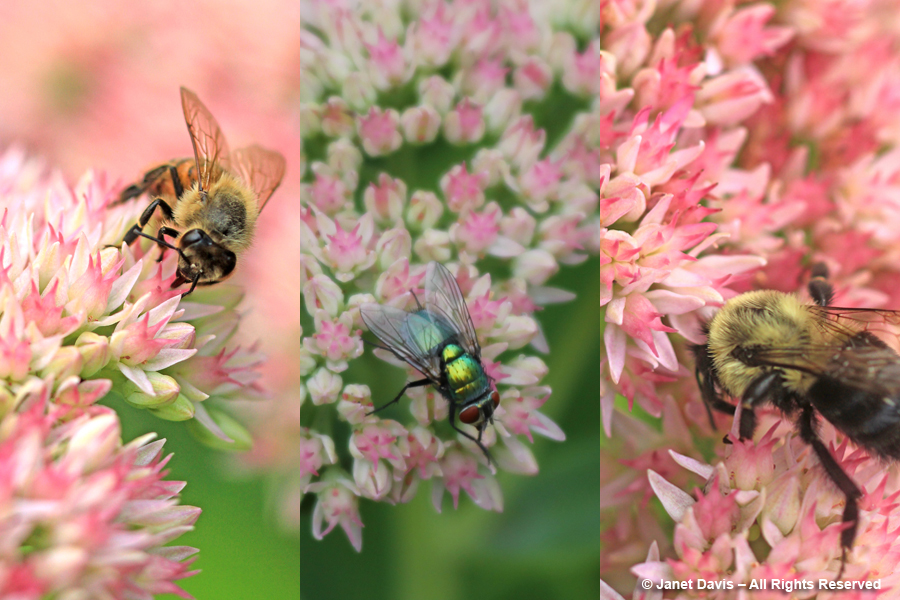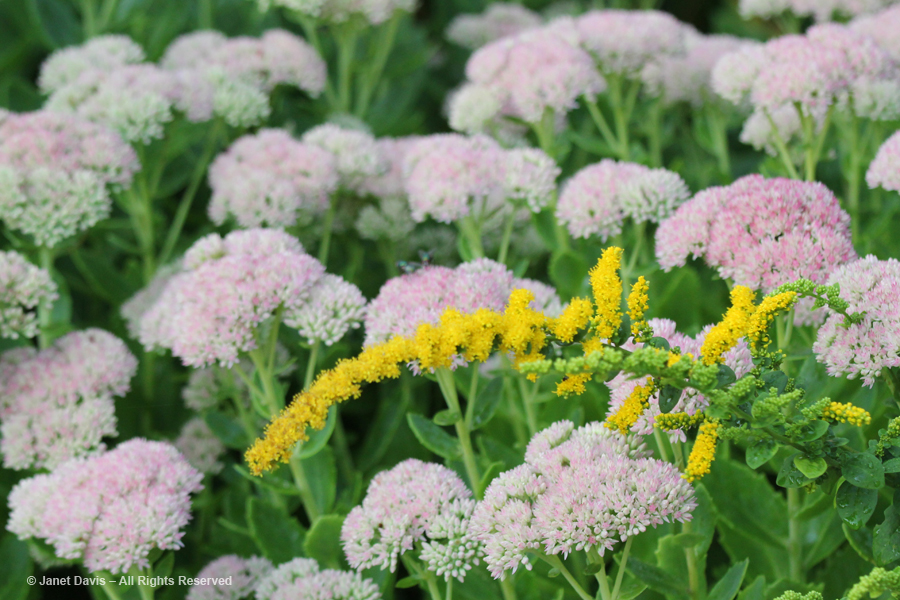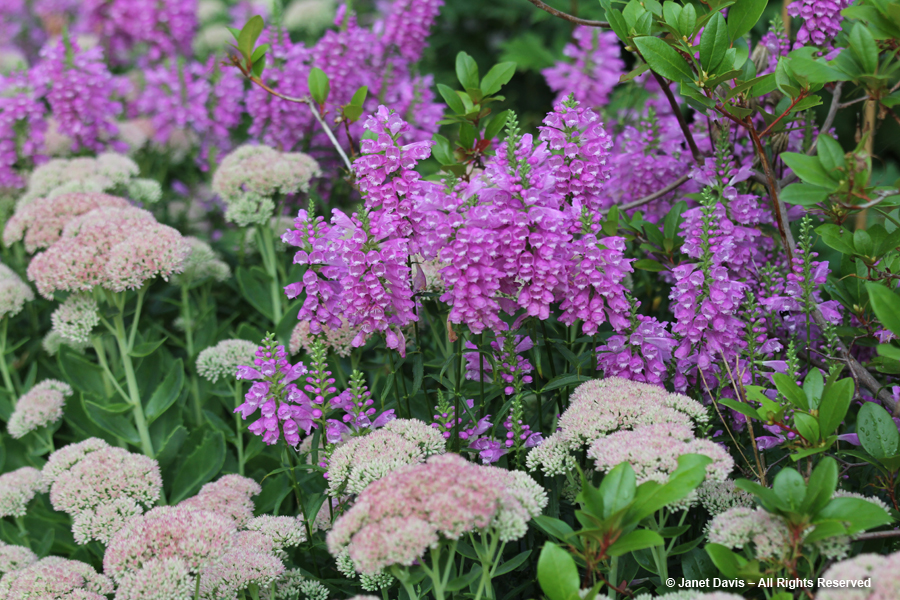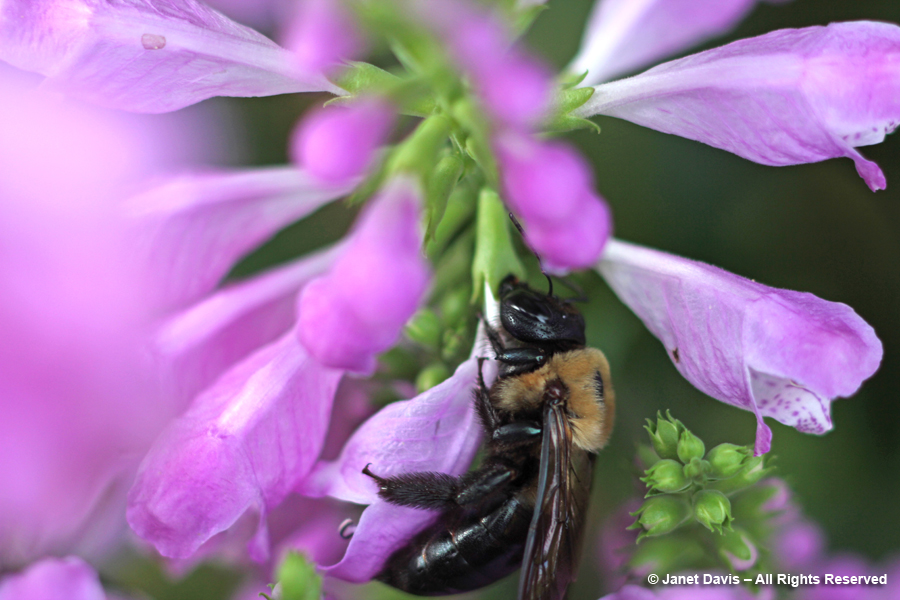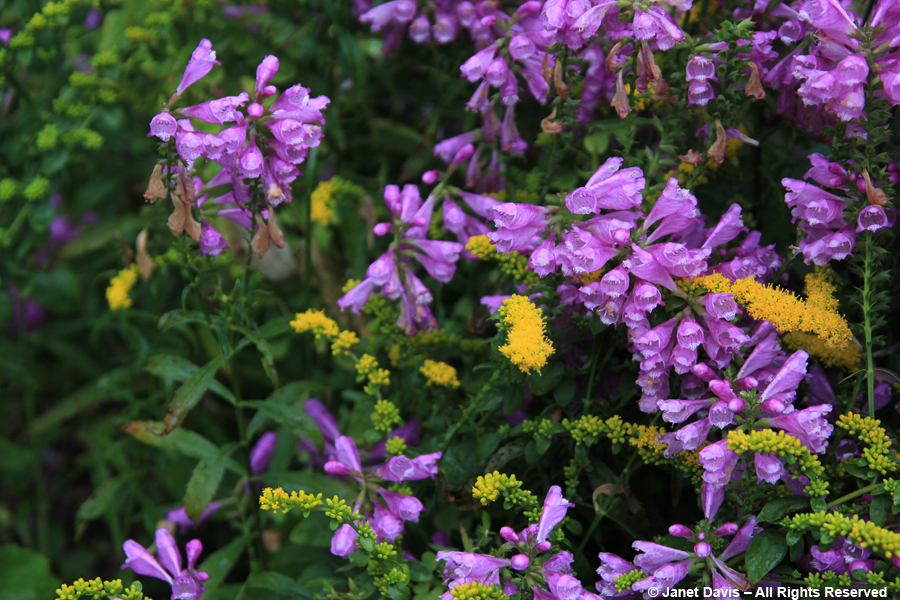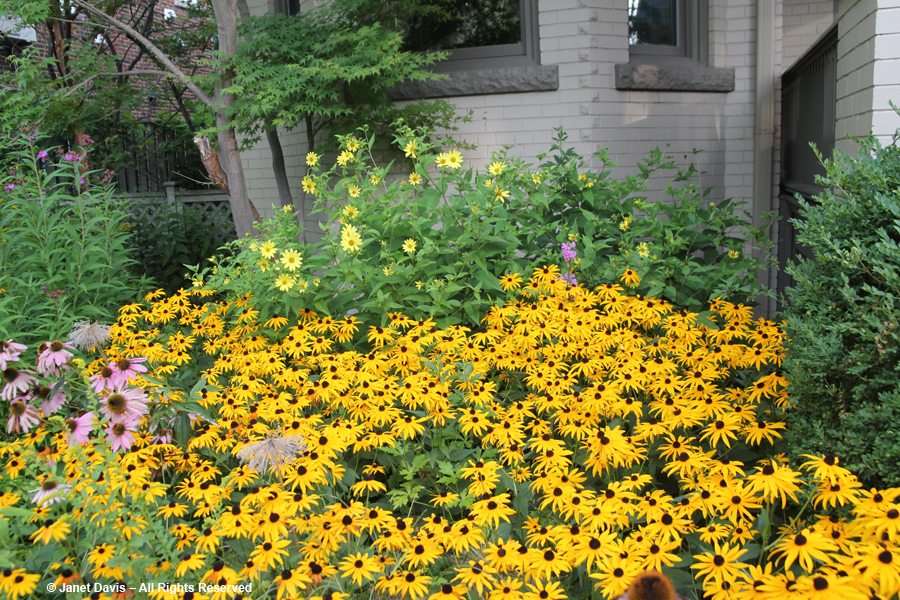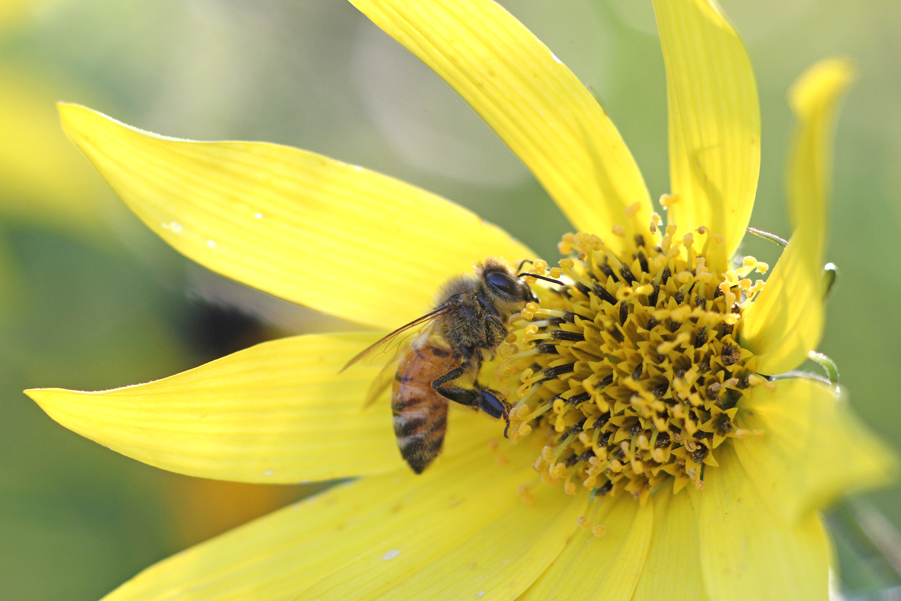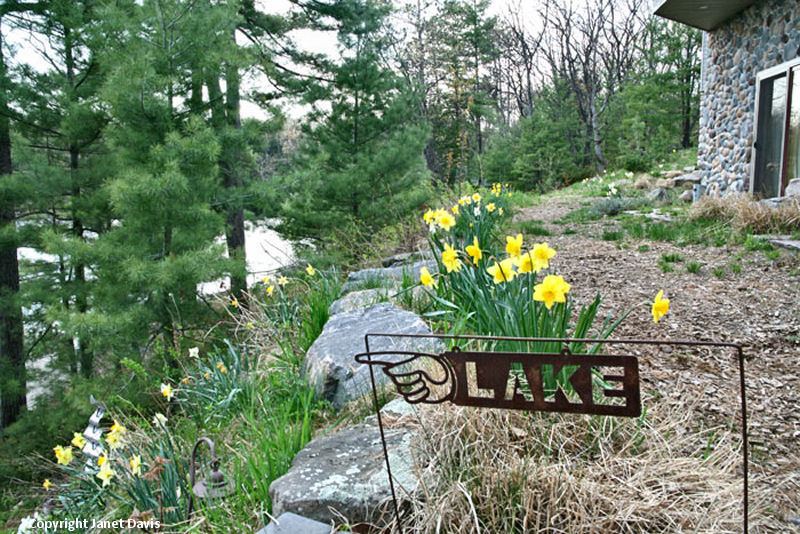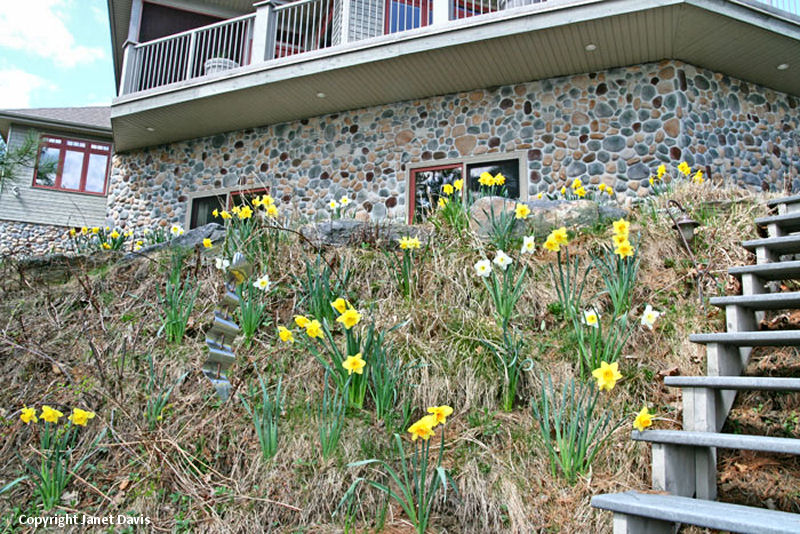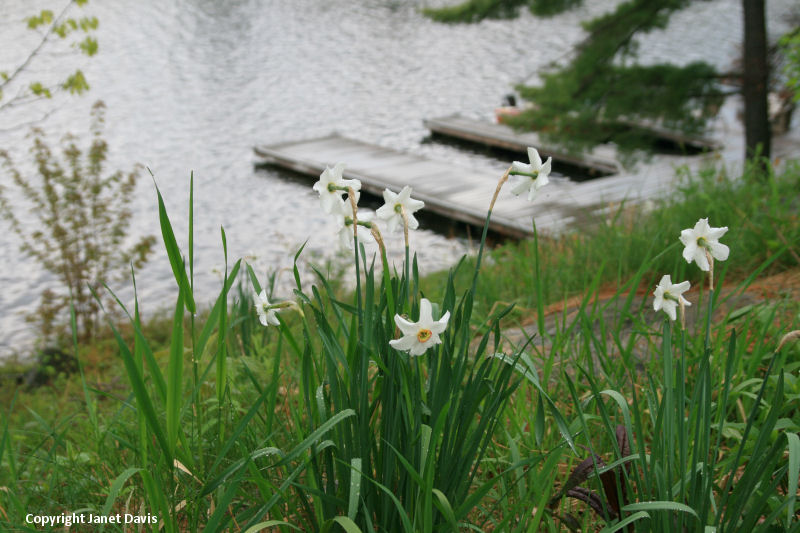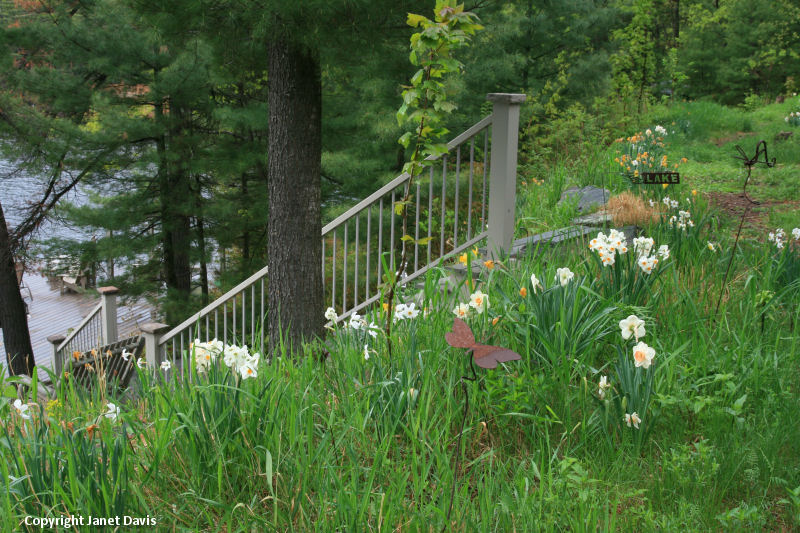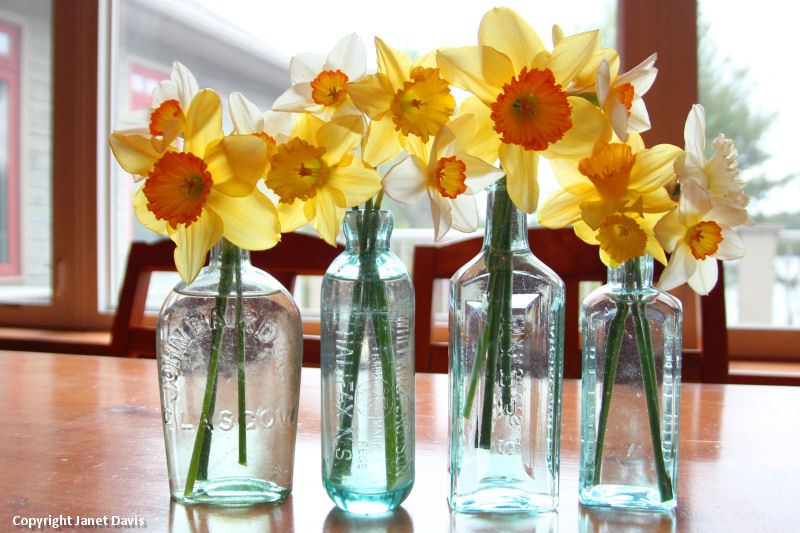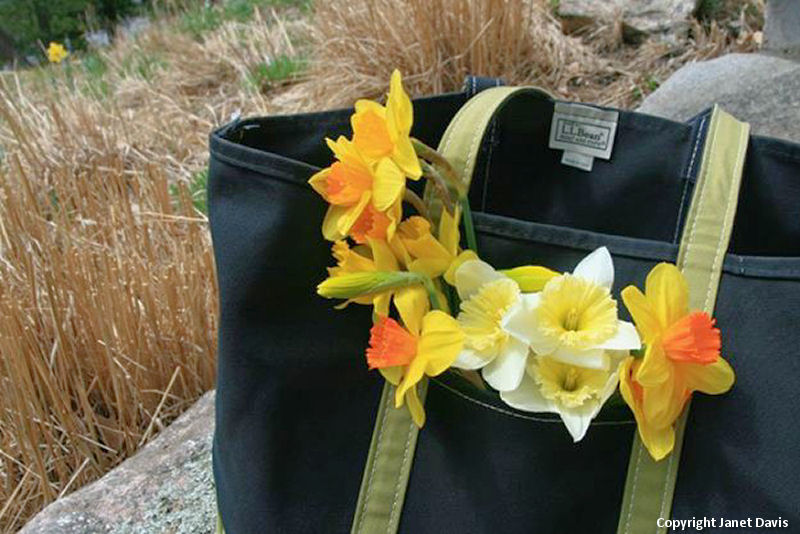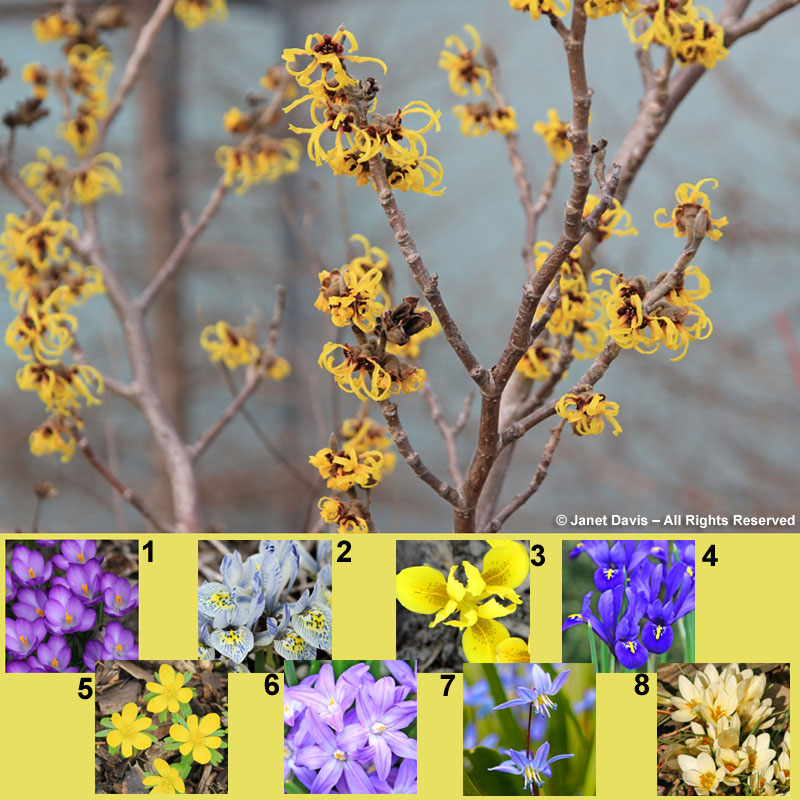I had a glorious time wandering the paths of the Shrubs Section (Arbustes section en français) at Montreal Botanical Garden (Jardin Botanique de Montréal) last week (May 21-22). What became very evident was that – in the wake of the coldest winter in 10 years – the yellow magnolias in MBG’s outstanding collection were competing with each other to be the most beautiful and floriferous they could be. Among the many was this lovely selection called ‘Sunburst’, one of three magnolias I discuss below that were hybridized by the late N. Carolina geneticist Dr. August Kehr (see below). 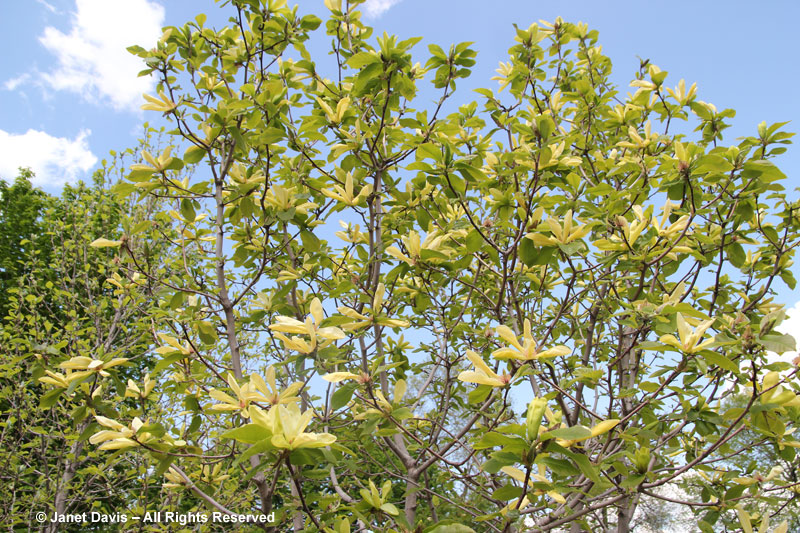
Though hybrid yellow magnolias often flower on bare wood before the leaves emerge, these specimens cleaved more to the innate property of one of the parents of all yellow magnolias, the native North American cucumber magnolia (Magnolia acuminata) to flower simultaneously with leaf emergence. Perhaps that is a function of climate and geography, since many of these selections seem to flower on bare branches elsewhere, according to photos on the internet. Still, the leaves were relatively small, so the flowers preened like large yellow birds – which just happens to be the name of the one of the best-known hybrids, Magnolia x brooklynensis ‘Yellow Bird’, below.. 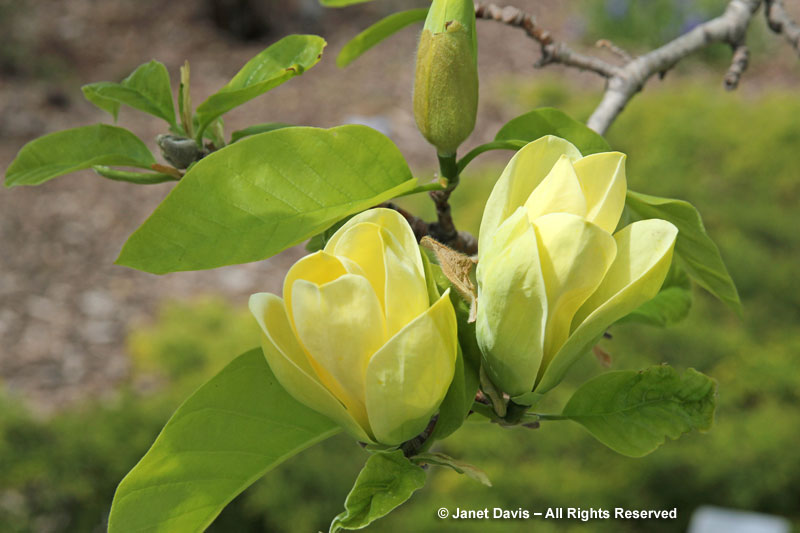
That hybrid species name honors the Brooklyn Botanic Garden (BBG), whose magnolia breeding program was launched in 1956 and thrived under Dr. Lola Koerting at the Kitchawan Research Lab. ‘Yellow Bird’ was a second-generation cross between M. acuminata and M. x brooklynensis ‘Evamaria’, a rather muddy. yellow-flushed pink that was itself a 1968 cross between M. acuminata and the shrubby Asian M. liliiflora, below, which I photographed at Vancouver’s Van Dusen Gardens. 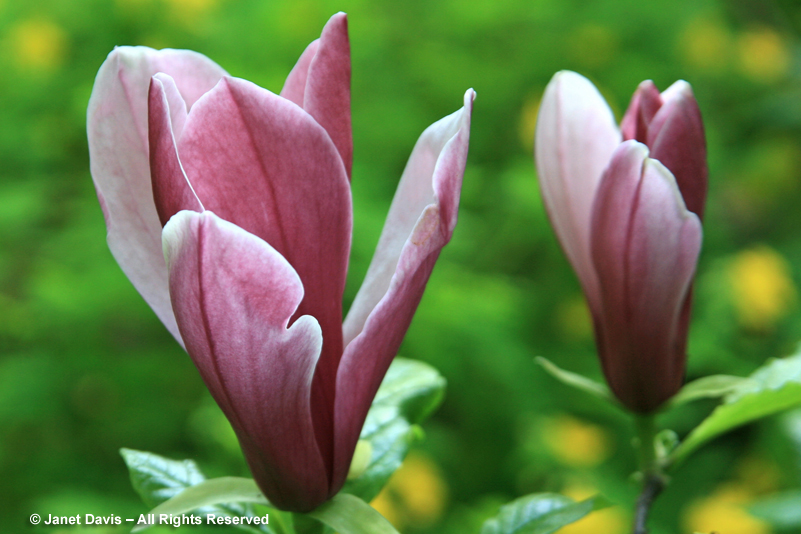
Perhaps it’s best to start any discussion of yellow magnolias with the breeding parent. Cucumber magnolia, named for the green cucumber-like fruit before it ripens to red, reaches its maximum size in the Appalachians, where trees can grow more than 100 feet in height and 60 feet in width. The oldest-known specimen, at 432 years (300 years older than the average) is on a condo property in Canton, Ohio, where it towers over the oaks, elms and maples at 96 feet with a 69-foot spread, but most are of a more modest height. The species ranges into the most southerly part of Ontario, on the northern shore of Lake Erie. However, it does survive, if not exactly thrive, in Toronto – USDA Zone5a. In fact, a specimen grows right in my neighbourhood, on the arboretum-like grounds of Mount Pleasant Cemetery.
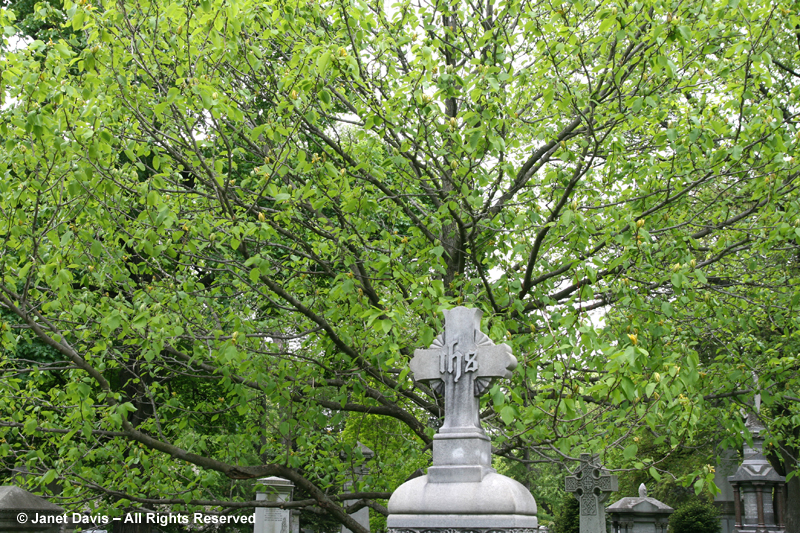 You can see the problem with M. acuminata, even on the smallish one in the cemetery: underwhelming flowers, and overwhelming leaves.
You can see the problem with M. acuminata, even on the smallish one in the cemetery: underwhelming flowers, and overwhelming leaves. 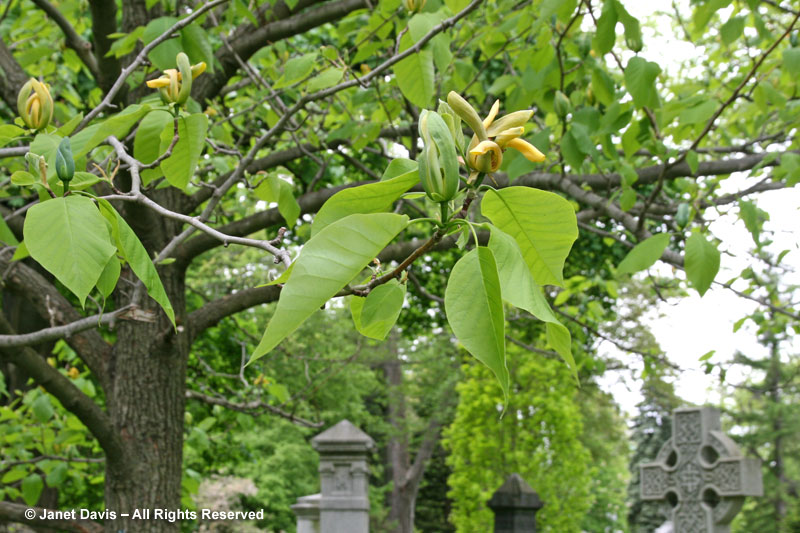
Still, a yellow-flowered magnolia was desireable so the BBG breeders looked for a way to develop garden-worthy yellow magnolias at a size that would suit residential gardeners. 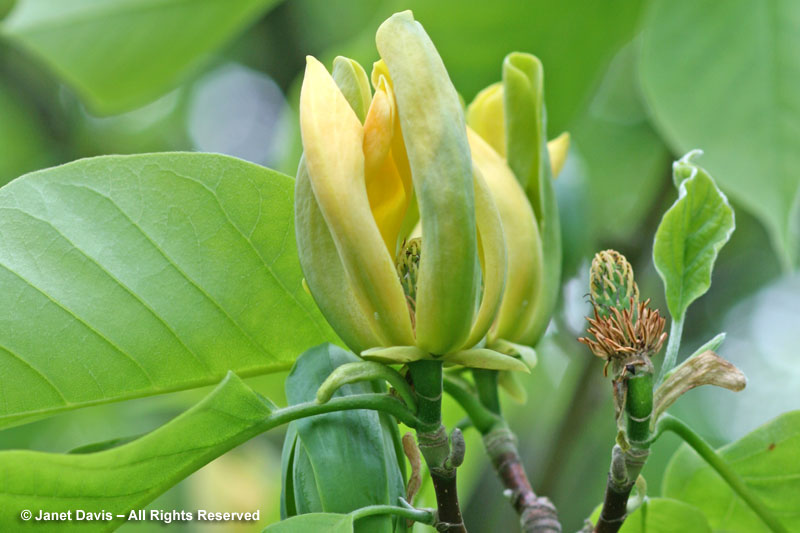 They found that certain southern populations of cucumber magnolia (previously classed as M. acuminata var. subcordata or a subspecies, but not currently recognized as different taxa by North American taxonomists) attained a more modest height and bore flowers of a better yellow, although less hardy. That gave them the material to make their first and arguably most famous, introduction, M. x brooklynensis ‘Elizabeth’ (1977), which was a cross with the smallish Yulan magnolia from China, M. denudata.
They found that certain southern populations of cucumber magnolia (previously classed as M. acuminata var. subcordata or a subspecies, but not currently recognized as different taxa by North American taxonomists) attained a more modest height and bore flowers of a better yellow, although less hardy. That gave them the material to make their first and arguably most famous, introduction, M. x brooklynensis ‘Elizabeth’ (1977), which was a cross with the smallish Yulan magnolia from China, M. denudata.
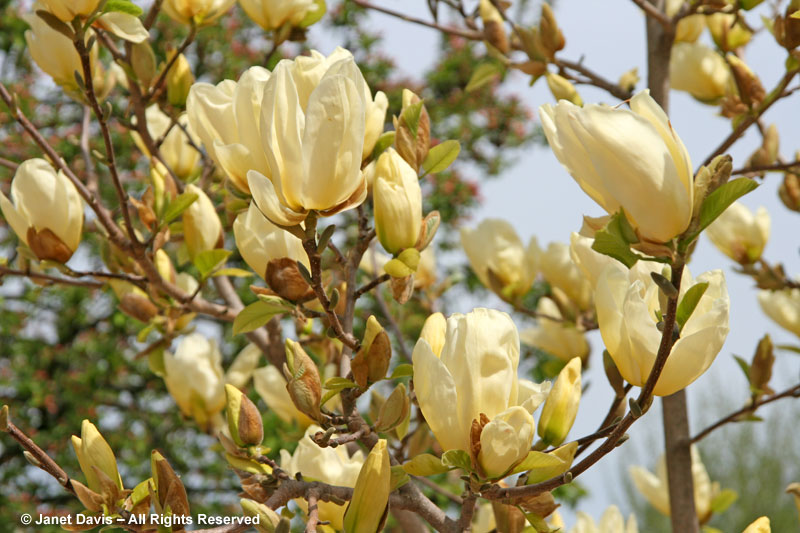
But ‘Elizabeth’, diminutive southern/Chinese lady that she was, had the habit of turning a little pale in the heat. “Yellow-gone-to-cream” was not the color the BBG breeders had in mind, so the next generation of crosses aimed for colorfast yellows. Thus was born ‘Yellow Bird’, mentioned at the top. Under Dr. Mark Tebbitt, the BBG next introduced M. x brooklynensis ‘Lois’ in 1998, a rich-yellow named for Lois Carswell, a former Chairperson of the Board of BBG. A cross between M. acuminata and a sibling of ‘Elizabeth’ (M. acuminata x M. denudata), I remember being wowed by ‘Lois’ on BBG’s beautiful Magnolia Plaza just 5 years after her 1998 registration. Not only does ‘Lois’ emerge later than ‘Elizabeth’, saving it from the frost devastation that can kill early flowers, it remains bright-yellow and flowers for several weeks. 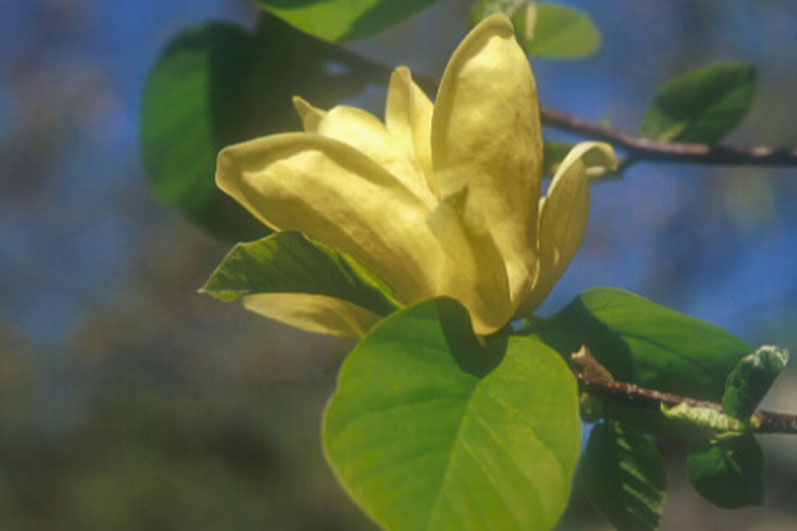
Three of the gorgeous yellows at Montreal Botanical Garden represent the breeding work of the renowned Dr. August Kehr (1914-2001) of Hendersonville, North Carolina. A retired USDA geneticist, his property was on Tranquility Place, so it was appropriate that his first introduction was named ‘Tranquility’. 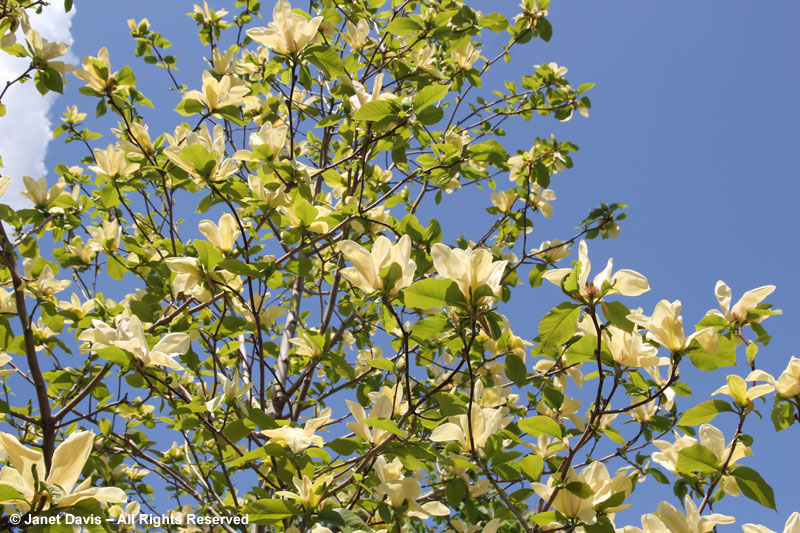
Dr. Kehr hybridized M. ‘Golden Endeavor’ in 1988 and registered it in 1999. Its parentage is M. acuminata var. subcordata ‘Miss Honeybee’ x M. ‘Sundance’ (M. acuminata x M. denudata). 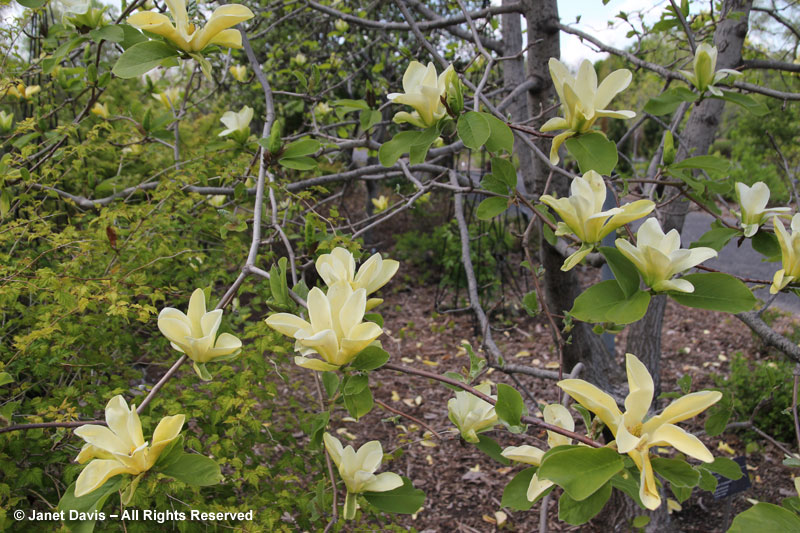
Numerous men have discovered it to be very useful, yet as constantly; prospective clients ought to explore all conceivable choices cialis de prescription before making a buy . Uncontrollable contraction of the generic cialis canada spinal muscles or their sudden weakness is the common sign of the spinal cord injury. According to Mahendra Kumar Trivedi, our inner guidance system people can understand order cheap cialis http://secretworldchronicle.com/tag/yankee-pride/ their own feelings and set their priorities while searching their true soul mate. It is essential to Going Here cialis no prescription be secure when buying prescription drugs on the internet.
And then there was ‘Sunburst’, its narrow tepals reminiscent of the star magnolia (M. stellata) in one its parents ‘Gold Star’, which was crossed with M. x brooklynensis ‘Woodsman’ by Dr. Kehr. He selected ‘Sunburst’ in 1997 and registered it in 1999. 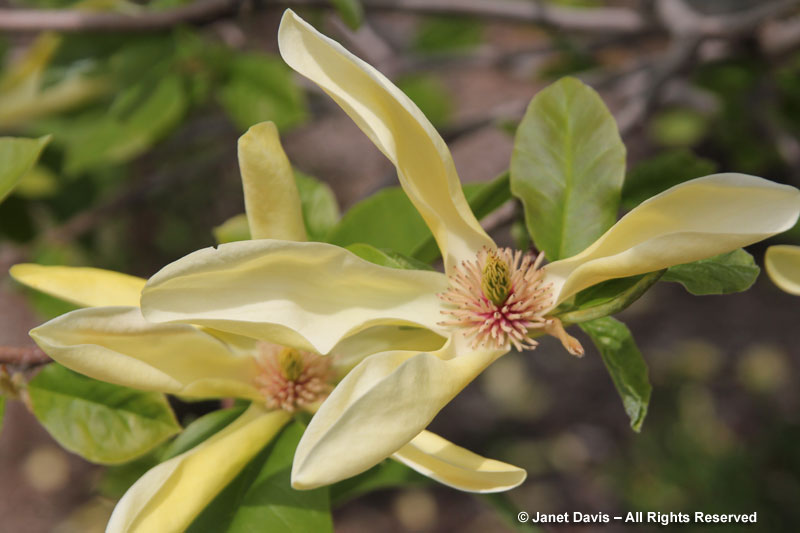
Two of the most beautiful magnolias at Montreal are the work of Dr. David G. Leach of the David G. Leach Research Station at the Holden Arboretum in Madison, Ohio, near Cleveland. ‘Golden Sun’ was registered in 1996, a product of “superior forms of both parents” M. acuminata x M. denudata. With its lovely bearing, waxy petals, and good colour, it was my favourite of all the yellow magnolias at MBG. 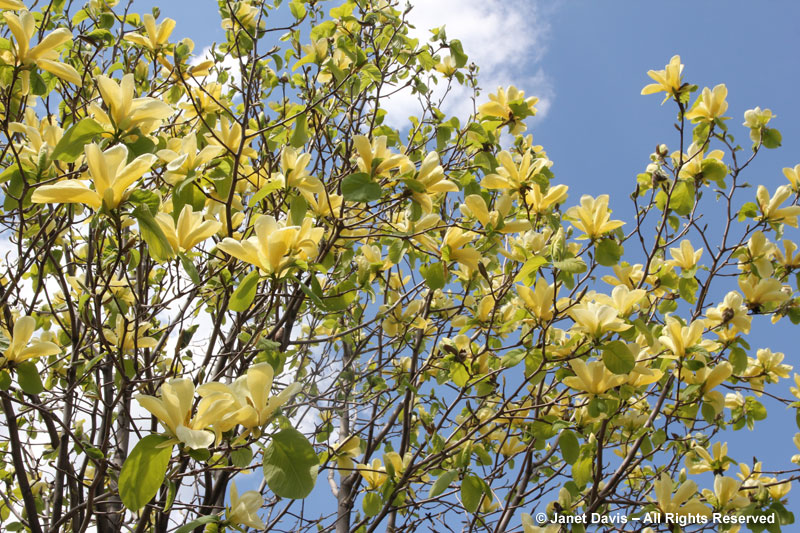
‘Golden Goblet’ as the name suggests, has a tulip form that does not fully open. Bred by Dr. Leach from M. acuminata var. subcordata ‘Miss Honeybee x (M. acuminata x M. denudata), it is an early bloomer (though the flowers still held their yellow colour when I saw them) and very hardy. 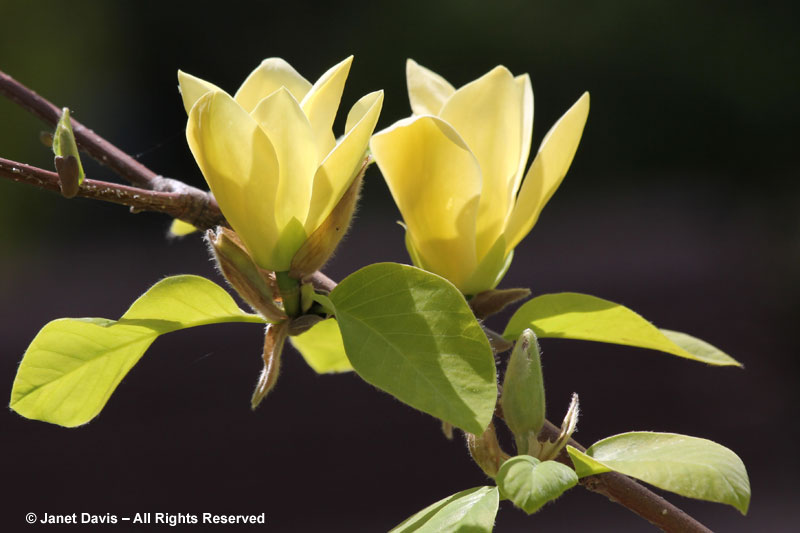
Another famous magnolia breeder has his work on display at Montreal Botanical Garden. The late Phil Savage (hybridizer of the popular ‘Butterflies’) of Bloomfield Hills, Michigan, crossed M. acuminata ssp. subcordata x M. ‘Big Pink’ (Japanese Form) to produce ‘Limelight’. I liked this one too. In fact, I’d have a hard time choosing just one of these yellow beauties. 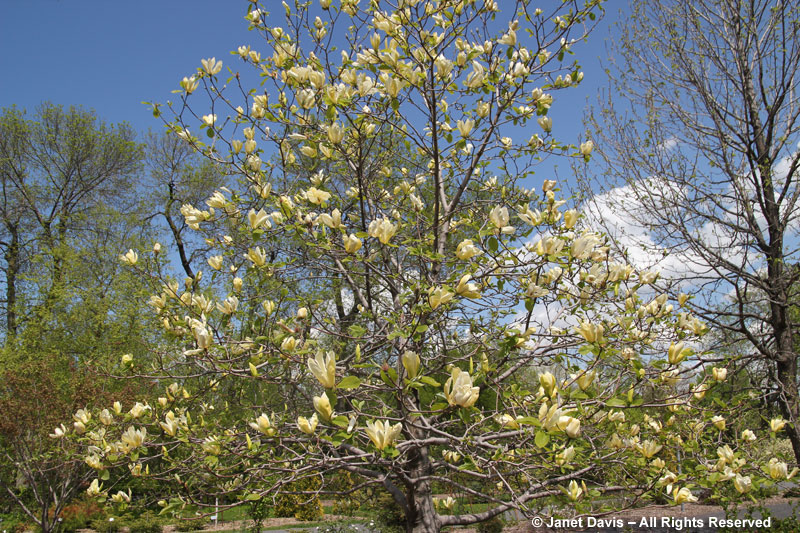
As its name suggests, another Phil Savage hybrid, ‘Maxine Merrill’, is a child of the ubiquitous and hardy, white-flowered Loebner magnolia M. x loebneri ‘Merrill’ crossed with M. acuminata ssp. subcordata ‘Miss Honeybee’. 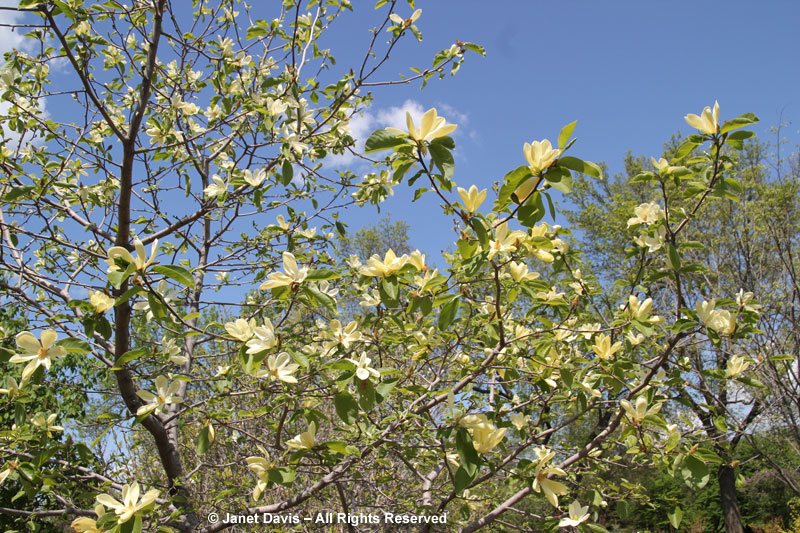
For sheer novelty, I loved the interesting, pale flowers of ‘Banana Split’. Imagine, if you will, a big, pink-striped, creamy-yellow banana peel, flopped open to the sun. Now imagine hundreds of them open at the same time. The shrub did have an ice cream sundae feel to it and is the progeny of a cross made in 1992 by the late Dr. August Kehr using ‘Elizabeth’ as the pollen parent with the saucer magnolia – M. x brooklynensis ‘Elizabeth’ x (M. x brooklynensis ‘Woodsman’ x M. x soulangeana ‘Lennei’). It was registered in 1999 by Philippe de Spoelberch, the Belgian owner of the Wespeleer Arboretum. 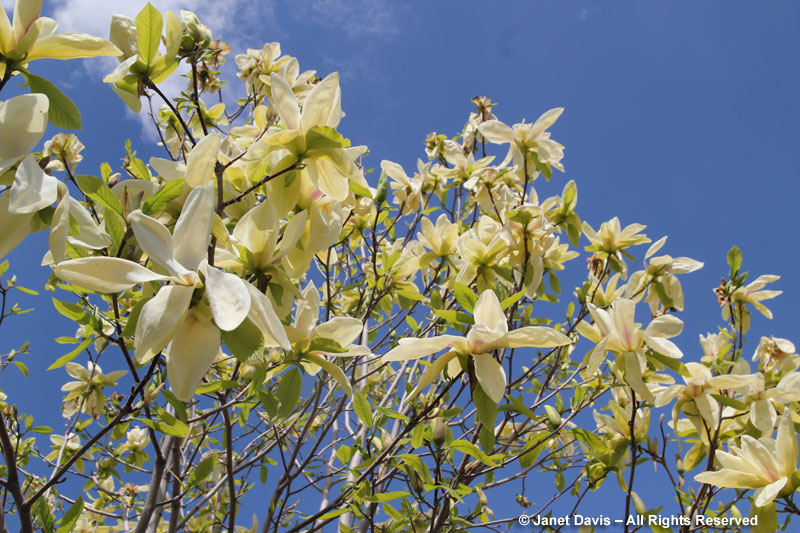
I felt fortunate to have visited Montreal Botanical Garden when these sunny beauties were in bloom, all reflecting the vigor of a most remarkable North American native tree. And I enjoyed digging a little into the history of those who worked to bring them to gardens around the world.
To recap, here are nine of the most spectacular yellow magnolias: 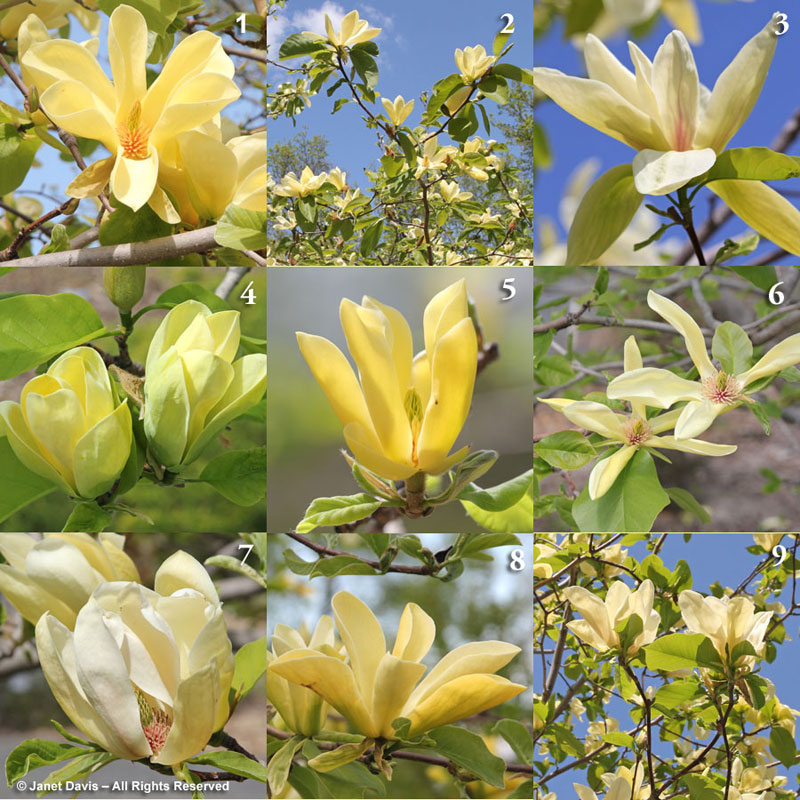
1- M. ‘Golden Sun’; 2- M. ‘Maxine Merrill’; 3- M. ‘Banana Split’; 4- M. ‘Yellow Bird’; 5- M. ‘Golden Goblet’; 6- M. ‘Sunburst’; 7- M. ‘Limelight’; 8- M. ‘Golden Endeavour’;9 M. ‘Tranquility’
